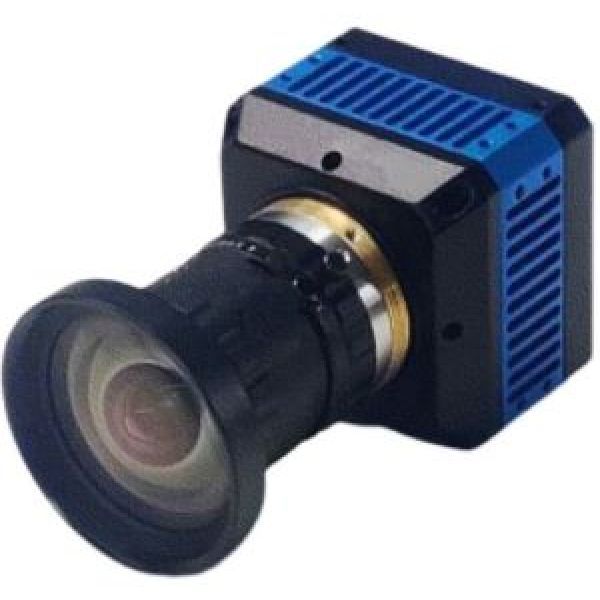What is a Wide Spectrum Camera?
Cameras have traditionally been designed to capture images in a specific range of wavelengths, usually visible light. However, the concept of a Wide spectrum camera goes beyond these limitations. A wide spectrum camera is a specialized device that captures images over a wider range of wavelengths, including visible and invisible light.
Learn the Basics of Camera Technology
Before delving into the intricacies of wide-spectrum cameras, it is essential to have a basic knowledge of camera technology. A standard camera consists of an optical lens, an image sensor, and various components that work together to capture and process images. The lens focuses the light onto the image sensor, which converts the incoming light into an electrical signal, which forms the basis for capturing an image.
Exploring the Concept of a Wide Spectrum Camera
Definition and Purpose
Wide spectrum cameras are designed to capture images using a wider range of wavelengths than conventional cameras. It enables visualization of visible and invisible light, such as ultraviolet (UV) and infrared (IR) wavelengths. By extending the range of captured light, wide-spectrum cameras offer unique insights and applications across various industries.
How Do Broad Spectrum Cameras Work?
Different Spectral Bands
Wide spectrum cameras work across multiple spectral bands, each representing a specific wavelength range. These bands can be divided into ultraviolet, visible, and infrared. A camera's ability to capture and distinguish light within these bands depends on the type of image sensor and filter used.
Image Sensors and Filters
Wide spectrum cameras utilize specialized image sensors that are sensitive to a wider range of wavelengths. These sensors can be divided into three types: CCD (Charge Coupled Device), CMOS (Complementary Metal Oxide Semiconductor), and FPA (Focal Plane Array). In addition, filters are used to selectively transmit or block specific wavelengths, enabling precise imaging.
Applications of Wide Spectrum Camera
Wide spectrum cameras have applications in a variety of fields, including:
Aerial and Satellite Imaging
Wide spectrum cameras are widely used in aerial and satellite imaging. By capturing images across multiple wavelengths, they aid in environmental monitoring, land surveying, and mapping. These cameras provide valuable data for urban planning, agriculture, and disaster management.
Monitoring and Security
Wide-spectrum cameras provide advanced capabilities in the surveillance and security field. They can detect and capture images in visible and invisible light, enhancing surveillance even in low-light conditions. These cameras are valuable in areas such as perimeter security, border control, and night vision surveillance.
Scientific Research
Wide spectrum cameras play a vital role in scientific research. They allow scientists to study and analyze a wide range of phenomena that occur outside the visible spectrum. Researchers can collect valuable data in fields such as astronomy, biology, environmental science, and materials analysis.
Advantages of Broad Spectrum Cameras
Enhanced Visibility and Detection
By capturing a wider range of wavelengths, wide-spectrum cameras can reveal details and patterns that might not be visible to the naked eye. They can detect hidden objects, identify anomalies and visualize information critical for decision-making and analysis.
Versatility and Flexibility
The ability to capture images across different spectral bands gives Wide spectrum cameras great versatility. They are available for a variety of applications and industries, allowing for custom imaging solutions. From scientific research to industrial inspection, these cameras provide the flexibility to capture valuable data.
Limitations and Challenges
Cost and Complexity
Wide spectrum cameras are usually more expensive and complex than traditional cameras. The specialized components, image sensors, and filters required to capture the wide range of wavelengths add to the cost. In addition, the complexity of data processing and analysis creates challenges for users.
Data Processing and Analysis
Images captured from wide-spectrum cameras generate large amounts of data that need to be processed and analyzed. This requires advanced algorithms, computing power, and expertise. Effective data interpretation and extraction of valuable information can be time-consuming and resource-intensive.
Future Developments and Trends
As technology continues to advance, the field of wide-spectrum cameras is expected to grow further. Some future trends include:
- Miniaturization: Advances in miniaturization technology may lead to the development of smaller, more portable wide-spectrum cameras, expanding their use in handheld and wearable devices.
- Integration with AI: The integration of wide spectrum cameras with AI algorithms can enhance their capabilities for real-time image analysis, object recognition, and automated decision-making.
- Improved Sensitivity and Resolution: Future advances will likely focus on improving the sensitivity and resolution of image sensors, allowing more precise and detailed imaging across various spectral bands.
In Conclusion
Wide spectrum cameras provide a new dimension to imaging technology by capturing images over a wider range of wavelengths. With applications in aerial imaging, surveillance, scientific research, and more, these cameras provide valuable insight and enhanced visibility. Despite cost and data processing challenges, wide-spectrum cameras continue to evolve, opening up new possibilities across a wide range of industries.
The above introduces the relevant information about the wide spectrum camera. If you want to buy a spectrum camera or want to know more, please contact us.
With its leading R&D technology and excellent manufacturing process, JAVOL has become an industry-leading infrared thermal imaging systems manufacturer. We are committed to providing users with high-quality products and considerate services. We are equipped with a professional quality inspection system and perfect management system, which can fully control the quality and details of products. At the same time, we will also provide effective solutions according to the diverse needs of users.
Low-illumination camera can provide you excellent fog-penetration and low-illumination ability

